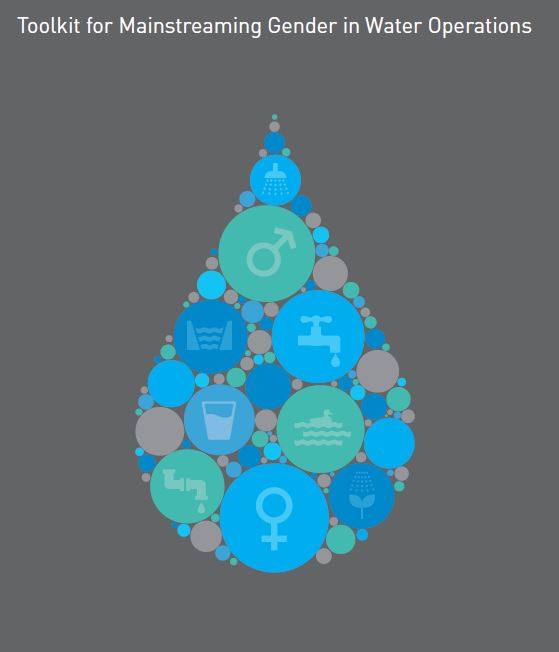TOOLKIT FOR MAINSTREAMING GENDER IN WATER OPERATIONS
Development initiatives are seldom “gender neutral.” It is often argued that because a project is pro-poor, it benefits the interests of male and female stakeholders alike. This widely held assumption limits the potential for optimal development outcomes, however, by generalizing the distinct challenges and priorities of these two groups. We find the same generalized approach in a comprehensive portfolio review of 1,400 projects completed from 2000 to 2014; the vast majority relied on prevailing assumptions or anecdotal evidence to describe project benefits and impacts on female beneficiaries. Generalizations that “pro-poor is pro-women” weaken development and investment outcomes for three reasons. First, men and women often have separate— and sometimes conflicting—priorities for water usage; second, they often have differing levels of access to water resources and may benefit differently from new water investments; and third, without specific attention to gender-based needs and concerns, the project may reinforce inequities in opportunities for water access and governance or social norms against women. The objective of this toolkit is to provide task teams with guidance to improve gender mainstreaming in project design, implementation, and evaluation. It focuses on the roles and responsibilities of both men and women to ensure the concerns and priorities of both genders are addressed. The toolkit also looks at how task teams can ensure project development objectives equally address the specific and shared interests of both females and males throughout the project cycle. The toolkit consists of two parts. Part I, “Eight Key Cross-Cutting Gender-Based Challenges Related to Water Access,” describes eight common challenges to water access in different subsectors, including water supply and sanitation, irrigation, and water resource management. Part II, “Guidance for Projects to Improve Development Outcomes by Addressing Gender Issues,” demonstrates five aspects of gender-sensitive project design and implementation: 1. Gender Analysis: Identifying the issues, needs and contextual factors affecting male and female stakeholders 2. Monitoring and Evaluation: Tracking and assessing progress toward goals and objectives to improve gender sensitivity 3. Targeting and Participation: Meaningfully engaging beneficiaries and other stakeholders in gendersensitive project design and implementation 4. Public Awareness and Social Marketing: Informing and effecting behavioral changes among water users in the way they gain access to and manage shared resources 5. Capacity Building and Organizational Development: Enabling all water stakeholders—from the implementing agencies to the beneficiaries—to build requisite skills and knowledge for gender-sensitive water services and resource management Additional resources are presented in five annexes. Annex I: Why does Gender Have to do with My Work in the Water Sector? Annex II: Suggested Indicators for Gender-Sensitive Monitoring and Evaluation Annex III: Assessment and Actions for Gender Capacity Building in Operations Annex IV: Sample Terms of Reference for Gender Specialists in the Water Projects Annex V: Annotated Bibliography
